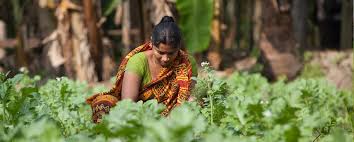Availability of food’ and ‘Access to food’ have always been subjects of discussion on food security. It took a long time to grasp that the former does not necessarily imply the latter. However, the belated realisation is what matters most for food security is ‘entitlement’, as Amartya Sen said. It is perhaps premised on the empirics that many famines around the world have occurred even when the aggregate food supply was not short of demand. On the other hand, confusion also looms large regarding the nexus between good agricultural production and improved nutritional status of the population, especially of children.
The attempt to link agricultural production with food availability – and food security – is a very old one. No stone seemingly has gone unturned in every society to see that food production match the aggregate demand. The concern for attaining equilibrium in this respect appears more appealing, especially, on the heels of heightened Malthusian misalignment between the growth rates of population and food production.
Leveraging Agriculture with Nutrition in South Asia (LANSA), funded by DFID, is a new research programme. It tries to figure out how agriculture and agri-food systems, policies and strategies can better be designed to reduce malnutrition, seek solutions that will improve nutrition outcomes for young women and children in South Asia – a region experiencing extraordinary economic growth along with the highest rate of child malnutrition in the world, and where the link between the major source of livelihoods, agriculture and nutrition is seriously missing. LANSA aims to produce evidence relevant to decision-makers and other stakeholders with emphasis on research communications, facilitating knowledge and learning between outcomes.
Read original article at thefinancialexpress-bd.com
9 septiembre 2016Original Author: Abdul Bayes

